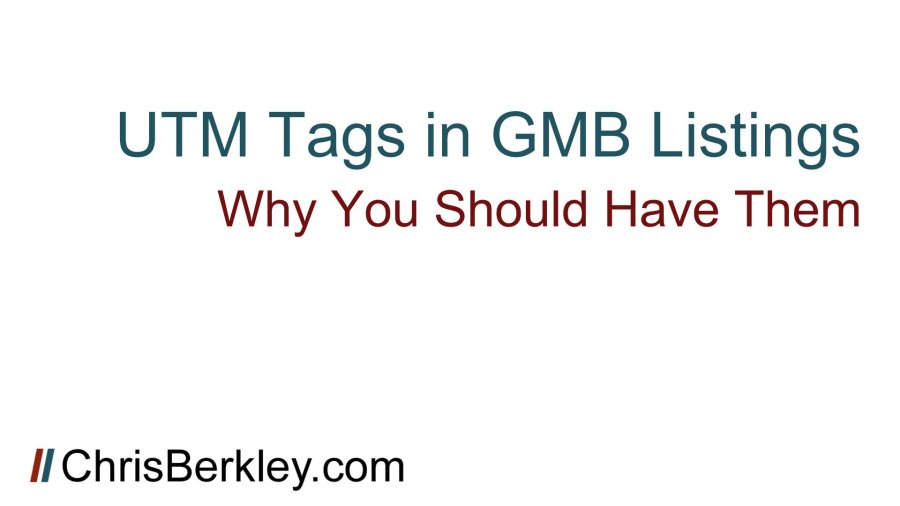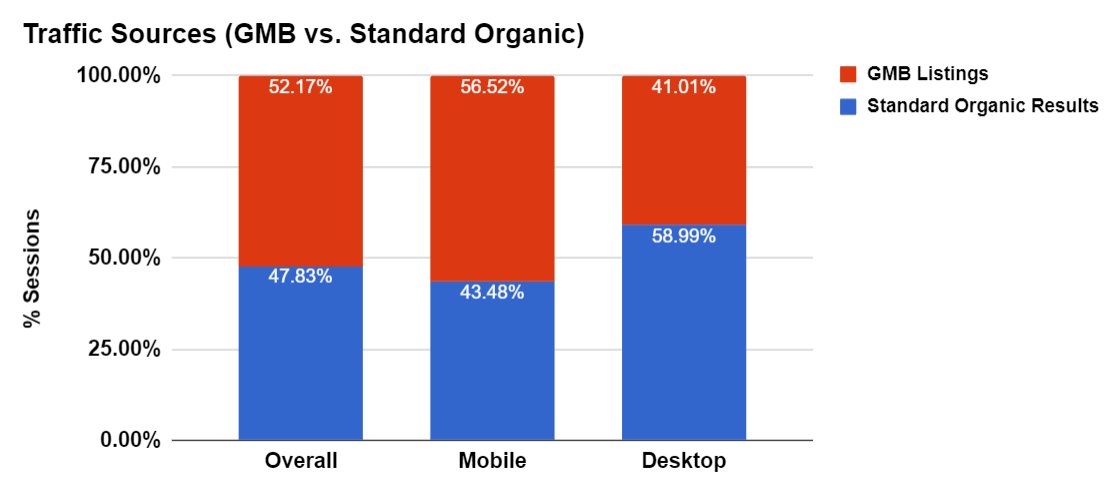
Google My Business Listings can drive a lot of organic traffic for businesses with a localized focus. Adding UTM tags to the website URLs within those listings is considered a best practice for optimizing GMB profiles.
What Benefit Do UTM Tags Have?
Without UTM tags, a page could be receiving organic traffic from two places and you wouldn’t have any idea which was the biggest driver:
- Standard organic results.
- Google My Business profiles (knowledge graphs, local map packs, Google Maps)
Adding UTM tags lets you differentiate between them and understand the impact local map packs may have. For example, if the local map pack was driving the majority of traffic, then you’d want to spend more time ensuring that you’ve optimized GMB profiles, citations, etc. in order to improve local map pack rankings.
If the majority of traffic does not come from GMB listings, then it might be an early indicator that the site doesn’t rank well in those map packs, or it may be a sign that the map packs don’t play that big a role in a given industry.
Only by determining where traffic is coming from can you determine where you need to focus your efforts the most.
Traffic Breakdown/Impact
Adding UTM tags to 25 of a client’s Google My Business listings recently revealed some unexpected insights. More than 50% of organic traffic to those locations came through a Google My Business listing.
We did not anticipate that much traffic coming from the listings. We estimated 20-30% as a generous estimate. Needless to say, this revealed a lot of revelations – improving the on-page optimizations would limit our ability to really drive results, unless we also focused on local SEO too.
It’s also worth noting that in this particular vertical, it makes perfect sense that mobile has a higher percentage of traffic from GMB listings. In this particular industry, the locations are places you’d typically drive to shortly after finding the location.
Implementing UTM Tags in Google My Business Listings
First, you have to devise a UTM tagging scheme. This is the scheme I recommend:
- Source: g-local (subjective, you can pick what you want).
- Medium: organic (required – anything else will prevent the traffic from appearing in the organic channel report).
- Content: [specific location name]
- Campaign: [regional location name]
If you’re tagging multiple listings at the enterprise level, the content and campaign categories are very helpful to identify specific locations and also regional markets. The client in this scenario operates in 8 regional markets with 25 locations spread across them.
It’s also worth noting that it’s good to keep these as short and abbreviate whenever possible. The GMB interface has a 256 character limit on URLs, so if your site’s URLs are long already, adding multiple UTM tag fields will push you past the limit very quickly.
Measuring Impact
It’s definitely recommended to do this before starting any local SEO efforts, because this will give you a baseline for how much traffic comes through various listings before you optimize them. Measuring map pack rankings is all and well, but traffic is the real metric you should be measuring. Doing this will also let you determine how well GMB traffic converts and if it makes a difference compared to traffic from standard organic results.
Questions? Tweet me @BerkleyBikes or comment here.



